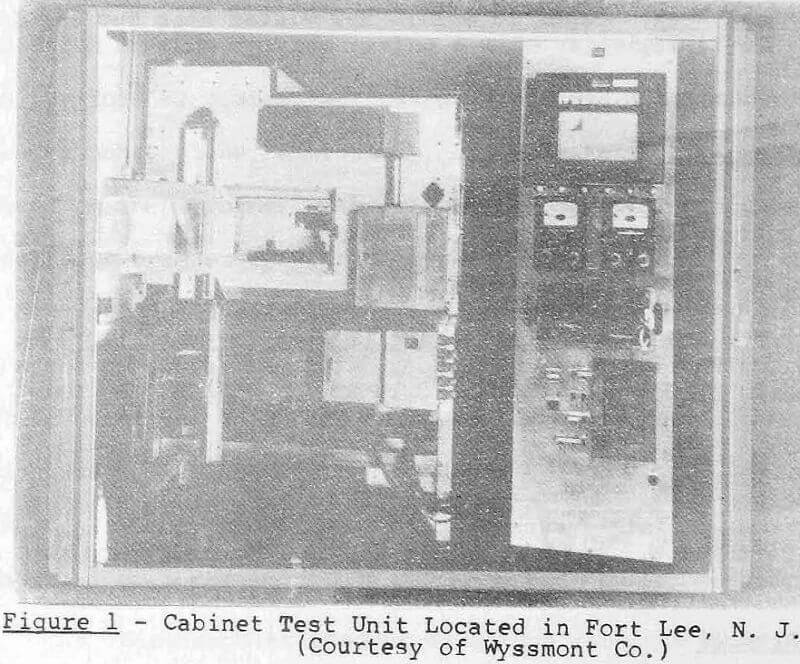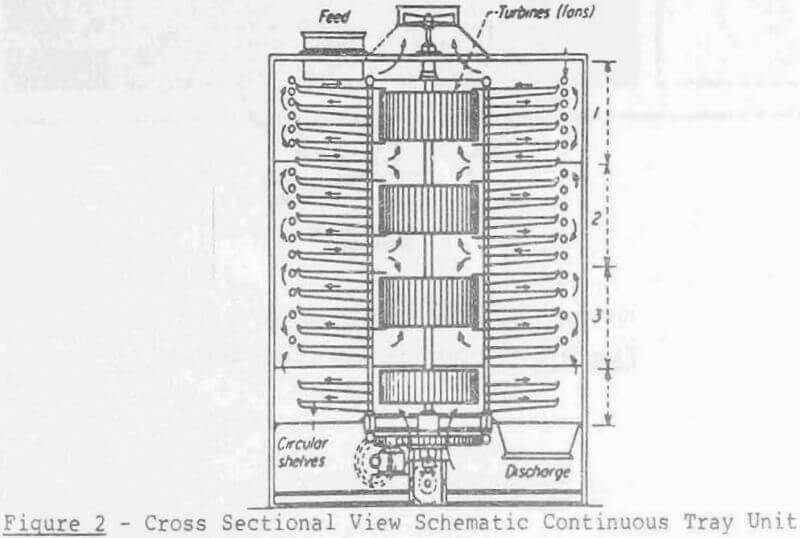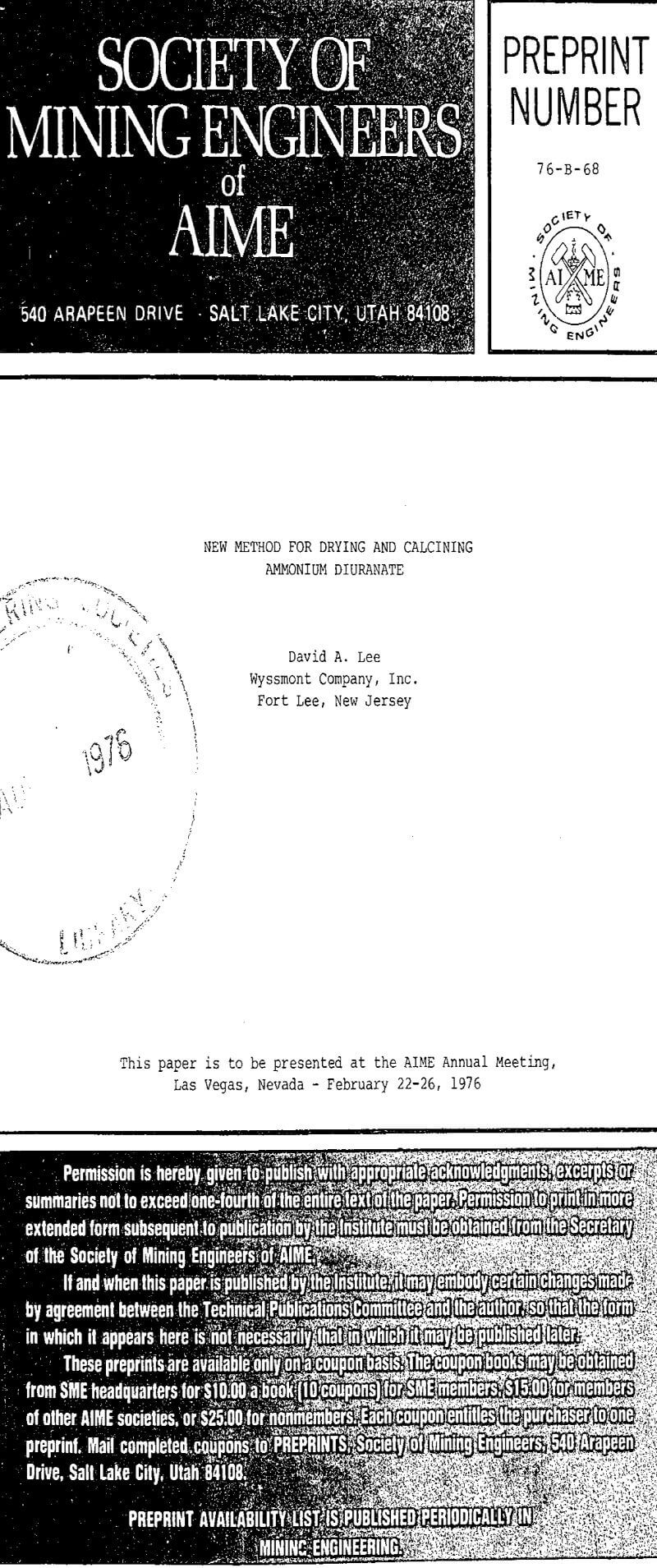‘Yellow cake’, so named because of its inherently bright yellow color, is a finely divided precipitate that can be formed after the leaching step when refining uranium ores. Feed solids enhancement then occurs to at least 50% by weight using filters or centrifuges. This is followed normally by drying and then calcining with the conversion of ammonium diuranate to triuranium octoxide represented by the following equation:
![]()
Theoretically, assuming 100% conversion, every 100 kgs, or 100 lbs. of ammonium diuranate will result in 90 kgs, or 90 lbs. of triuranium octoxide.
Initially, drying and calcining of ‘yellow cake’ feed stocks were two separate operations; however, recently, the trend appears to combine them into one operation. When just drying alone it reportedly was accomplished in such dryers as drum, “belt screw etc., usually steam-heated or gas-fired, using operating temperatures ranging from 120-175°C (248 to 347°F). The corresponding drying times varied anywhere up to 18 hours; residual moisture contents in the dried product ranged from 3-6%.
Another source of concern when using refractory-lined kilns could be the secondary dry dust collectors which are often employed to recover entrained fines in the exhaust gas prior to their being vented to wet scrubbers. In addition to the associated costs of these collectors, material handling facilities would normally be required for the product fines collected.
During the initial testwork, it was determined that the feed material could be fed directly to the top horizontal circular tray. Furthermore, the free surface moisture evaporated very quickly. Thus, the resultant solids remaining could then be conveyed in a true plug-flow fashion from the upper trays to each succeeding tray just a few inches below it in the slowly-rotating stack.
As the ‘yellow cake’ material progresses down through the tray stack, it is first dried and then calcined as a result of the intimate contact with the hot inlet drying gases introduced at about 1000°F (538°C) throughout the vertically-orientated manifold in one side panel in the main housing. Once inside, these gases are recirculated by the internal, integral fan assembly which promotes intimate contact with the material being processed. This assures high heat and mass transfer rates..
The proprietary circular “over the rim” tray design (see figure 4) also has one (1) set of positioned stationary leveler and wiper blades, respectively, for each level; however, instead of being perpendicular to the tray, they are on a bias so that the materials being processed are transferred over the outer rim – now a straight edge – to the outside section of the tray just a few inches below.



